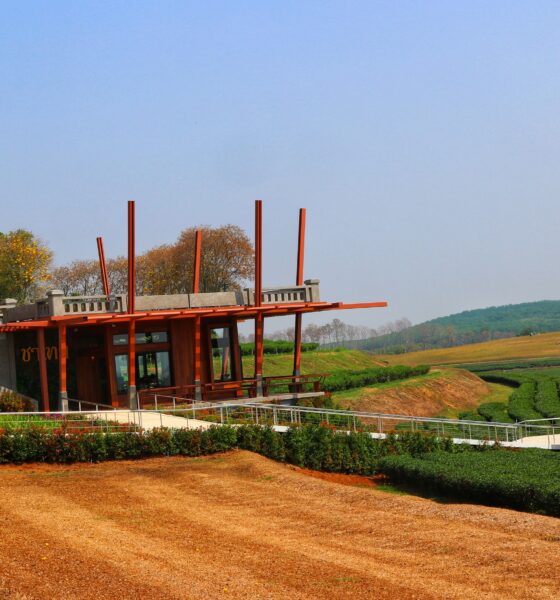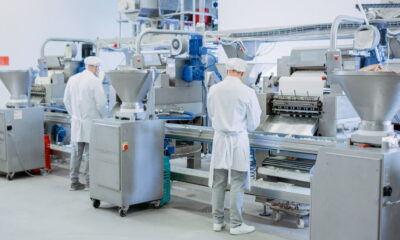

Environment
Container Farming 101 for Eco-Friendly Farmers
Farming has a huge impact on our planet. The World Wildlife Fund reports that farming consumes about 69% of the world’s fresh water. Agriculture also accounts for about 10% of all greenhouse emissions in the United States.
We have talked a lot about some of the things that eco-friendly farmers need to do if they want to lower their carbon footprints. We mentioned that they should avoid using unnecessary pesticides, grow crops that require the least amount of energy and water to thrive and focus on growing plants over raising animals.
However, there are a lot of other things that we haven’t touched on. One of the things that eco-friendly farmers should explore is practicing container farming. Keep reading to learn how this can be a green way to farm.
Container Farming Can be the Future of Sustainable Agriculture
Container farming, also known as shipping container farming, is revolutionizing how we grow crops. It offers an innovative solution to traditional farming methods, allowing individuals to cultivate fresh produce in confined urban spaces or areas with limited access to arable land.
One key benefit of container farming is that it provides a sustainable alternative to conventional agriculture while offering numerous environmental benefits. Use the following guide to learn more about the basics of container farming and explore how you can kickstart your container farm while prioritizing environmental sustainability.
Buying a Shipping Container
When purchasing a shipping container, it’s essential to consider factors beyond size and price. Look for Boxhub shipping containers for agriculture made from materials safe for growing food, such as food-grade stainless steel or non-toxic coatings.
Assess the condition of the container carefully, checking for any signs of damage or rust that could compromise its structural integrity. Additionally, explore options for used containers, as they tend to be more budget-friendly and contribute to sustainability by giving existing materials a new purpose in agriculture.
Container Farm Setup
Designing the interior layout of your container farm requires thoughtful planning to make the most of limited space. Container farming can indeed be implemented through vertical farming techniques. Vertical farming involves growing crops in vertically stacked layers, often in controlled indoor environments. This approach maximizes the use of space, making it suitable for container farming setups.
According to a Market.us report, the vertical farming market is predicted to surpass $35.3 billion by 2032, with a 20.8% CAGR from 2023 to 2032, up from $5.6 billion in 2022.
Utilize vertical farming techniques to maximize growing area without expanding the footprint. Consider installing adjustable shelving units and modular systems that can be easily rearranged to accommodate different crops or growth stages. Implementing smart automation and monitoring systems can help optimize resource usage and maintain ideal growing conditions, ensuring the success of your container farm while minimizing environmental impact.
Green Energy Integration
Incorporating renewable energy sources like solar panels or wind turbines into your container farm reduces reliance on fossil fuels and contributes to long-term cost savings. Evaluate your farm’s energy needs and invest in an appropriate renewable energy system to meet those requirements sustainably.
Explore opportunities for energy storage solutions such as batteries or capacitors to store excess energy generated during peak production times for use during periods of low sunlight or wind. You can power your container farm by harnessing green energy while minimizing its carbon footprint and environmental impact.
Water Conservation Techniques
Efficient water management is critical for sustainable container farming. Implement drip irrigation systems or hydroponic setups that deliver water directly to plant roots, minimizing waste and optimizing hydration. Consider capturing and storing rainwater for irrigation, reducing reliance on freshwater sources and alleviating pressure on municipal water supplies.
Utilize water recycling systems to treat and reuse wastewater from your farm, closing the loop on water usage and minimizing environmental pollution. By prioritizing water conservation techniques, you can ensure the long-term sustainability of your container farm while protecting precious water resources.
Soilless Growing Methods
Soilless growing techniques such as hydroponics or aeroponics offer numerous advantages for container farming. These methods eliminate the need for traditional soil, reducing the risk of soil degradation and nutrient depletion. Instead, nutrient-rich solutions or misting systems deliver essential nutrients directly to plant roots, promoting healthier growth and higher yields.
Soilless growing methods also require less water and space than conventional farming, making them ideal for container farming in urban environments or areas with limited land availability. By embracing soilless growing techniques, you can maximize the productivity and sustainability of your container farm while minimizing environmental impact.
Environmental Benefits
The environmental benefits of container farming extend far beyond just sustainable food production. By repurposing shipping containers and converting urban spaces into productive farms, container farming helps minimize land usage and preserve natural habitats. The controlled environment of container farms reduces the need for harmful pesticides and herbicides, promoting biodiversity and ecosystem health.
The proximity of container farms to urban centers reduces the carbon footprint associated with transportation and distribution, leading to lower greenhouse gas emissions. Overall, container farming represents a holistic approach to sustainable agriculture that prioritizes environmental conservation and resource efficiency, paving the way for a greener and more resilient food system.


 Environment10 months ago
Environment10 months agoAre Polymer Banknotes: an Eco-Friendly Trend or a Groundswell?

 Environment11 months ago
Environment11 months agoEco-Friendly Home Improvements: Top 7 Upgrades for 2025

 Features9 months ago
Features9 months agoEco-Friendly Cryptocurrencies: Sustainable Investment Choices

 Features10 months ago
Features10 months agoEco-Friendly Crypto Traders Must Find the Right Exchange





























